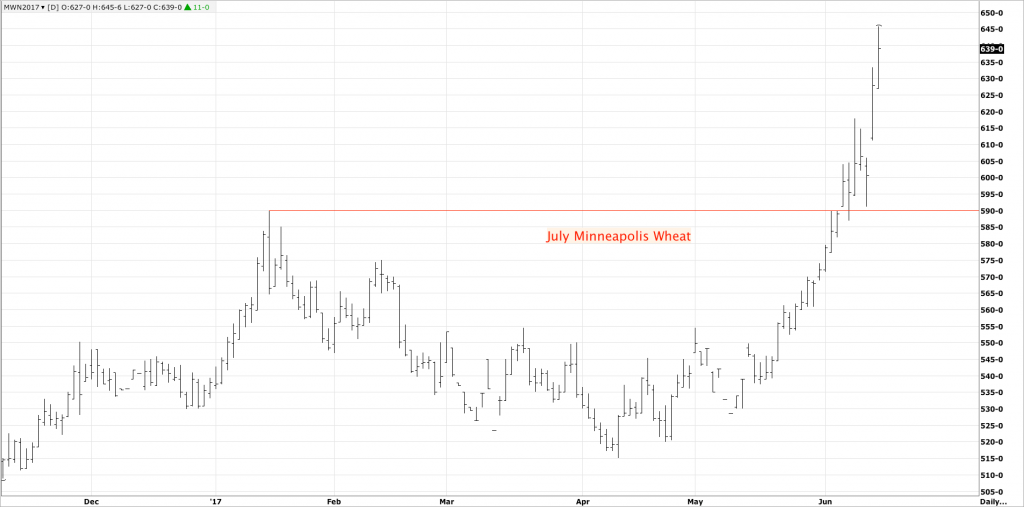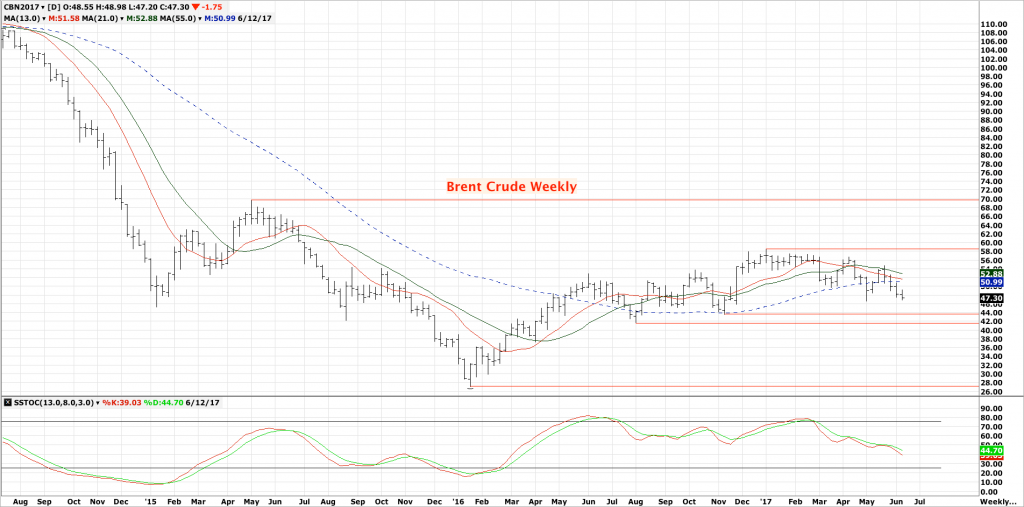By: Dan Hueber –
After a bit of whip-saw action on Monday and Tuesday, a certain amount of calm and strength appears to have returned to the grain and soy markets. Wheat appears to be leading the charge as concerns continue to mount over the hot dry conditions in the Northern Plains. While the Chicago and KC markets are not doing too poorly themselves, note that Minneapolis futures have now rallied over $1.30 from the April lows or around 25%. While there is certainly no assurance that this kind of explosive strength will bleed over to other grain or soy markets without a weather scare, but is representative of just how rapidly the tide can turn particularly when the trade has been lulled into supply complacency. In case you are curious though, a 25% rally from the spring lows in corn would push July futures to around 4.50 and December corn to 4.75.
You may have noticed that the crude oil market has remained on the defensive for the past couple months in spite of the OPEC/Russia agreement to extend the cutback in production, so what gives? Well, according to the International Energy Agency, global oil markets are looking beyond the contrived efforts of OPEC to the actual economic realities of energy production in the future and obviously are telling us that cartels determining who will produce what and where, do not hold the influence that they did in the past, and of course for the rest of us, that is a good thing. The IEA is now predicting that global demand for crude will increase by 1.4 million barrels per day in 2018, versus 1.3m this year but counter-balancing this will be an increase in output from NON-OPEC producers of 1.5 million barrels per day. Of this total increase, more than half will come from U.S. Shale production. According to the report, the US Shale industry has quickly adapted to the lower prices that we currently experience, so have basically grown leaner and meaner and could even expand at a more rapid pace when prices move higher. By no means does this suggest that we are ready to embark on a new bear market in energies, particularly when a volatile Middle East remains as a key element in the overall picture and as long as the global economy continues to grow, so will the demand. That said, it would also appear that the days of a small group of countries, collectively determining what the rest of us should pay for our energy is a thing of the past and that is what free market trade should be about.

